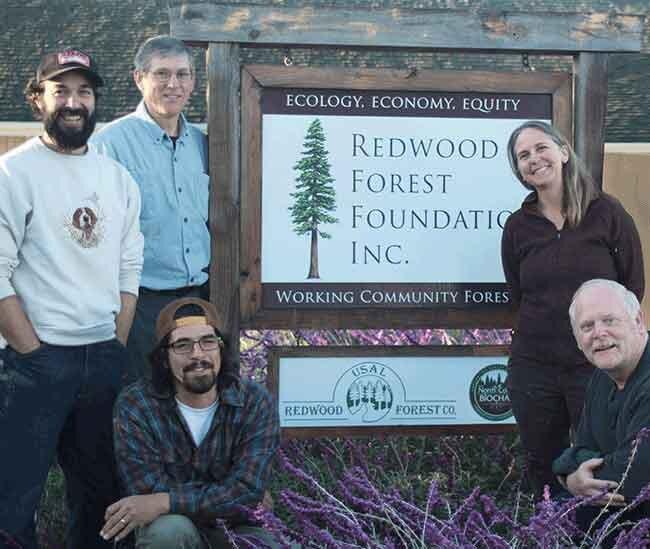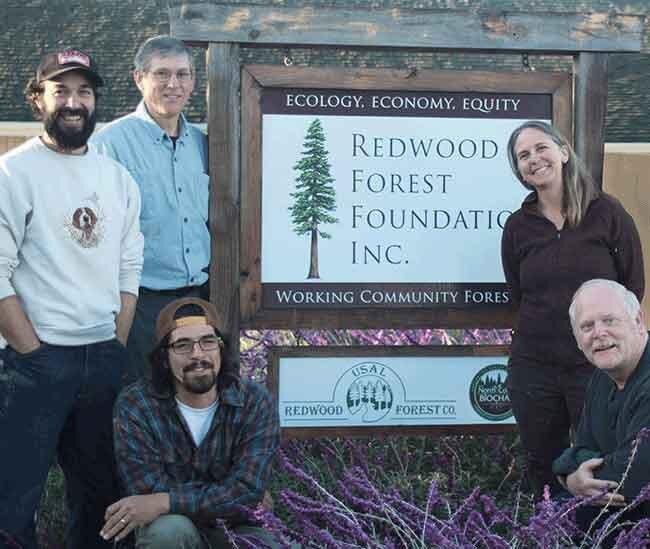The state of California is waging war against environmental issues such as severe catastrophic forest fire, drought, and climate change. Last week, the Redwood Forest Foundation hosted an informational Zoom meeting introducing a series called, “Dig Into Nature: Biomass to Biochar.”
This series discussed the characteristics and benefits of creating biochar, which is charcoal produced from plant matter and stored in the soil as a means of removing carbon dioxide from our atmosphere. This type of charcoal provides specific benefits to our forests, soil, and our climate. Biochar is rich in carbon, and helps to enrich soil for thousands of years.
Even during a pandemic, the Redwood Forest Foundation is set on “acquiring, protecting, and sustainably managing forestland” for the benefit of having a safer and more protected Earth.
With climate change comes drought, and with extremely dry conditions come extremely large, hot burning fires. Forest maintenance is crucial to fire prevention and mitigation, but it can also present its own hazards through the resulting debris. While there are several approaches to dealing with that debris, one has the potential to keep carbon from escaping into the atmosphere and potentially adding to soil health, without the use of heavy equipment. This creates the process of converting biomass to biochar.
The RFFI and the Sonoma State Ecology Center are taking it one step further to create prescribed burns for building healthier, fire-resilient forests. They are creating fuel breaks and converting the removed slash into biochar within the forest. From there, the biochar will be placed in the forest as soil to improve nutrients and water retention, while being able to store carbon.
The Usal Forest, where this project will be taking place, is approximately 50,000 acres in Northwestern Mendocino County along the Northern California coast. The RFFI purchased this property in 2007 with the focus of restoration, as the property had experienced a lot of lugging in the 1940’s and 1950’s. With this forest’s history, the foundation is dealing with young, dense forests.
Chief Forester of the Usal Redwood Forest Company, Linwood Gill, says that they, “…have done a lot of work on road decommissioning located down near the fish streams, we have done some large wood installation in these creeks to really improve fish habitat, and we have also done work in the forest to improve forest condition for both future timber harvests and fire resiliency.”
Since 2010, the Sonoma State Ecology Center has been exploring the use of biochar through a series of fuel trials and education activities. The goal of this is not to encourage more open burning, but to take an existing practice and make it less polluting. “While this technique significantly reduces smoke pollution, it converts a significant amount of the carbon contained in the plant material into a beneficial form of carbon we call biochar. This is an improvement on the conservation burn technique. It reduces smoke even further and produces better biochar,” says Raymond Baltar, the Biochar Project Manager of SSU’s Ecology Center.
Kelpie Wilson, from Wilson Biochar Associates, came up with an efficient way to create biochar using something called a Flame Cap Kilm. It is a container that excludes air from the sides and bottom of the burn, while the flame on top uses up all the oxygen and the char is well protected resulting in not being burned. There is also no bottom air which keeps the air close to the fuel. “One of the amazing things about biochar is it’s fairly easier to figure out what your climate impact is by weighing it and testing how much carbon is in it,” Wilson said.
What will some of the long term impacts be from putting biochar in the soil? Individuals are concerned about healthy soil because they help us contribute to clean water and crop reduction, reduced erosion, resilience to climate change, greenhouse gas emissions, etc. Research soil scientist Debbie Page-Dumroese states that these long-term effects of putting biochar in our soil include increased moisture, the understory staying green for a longer period of time, and tree growth is not impacted.
For more information regarding the project, visit Redwood Forest Foundation’s website.
COURTESY // Redwood Forest Foundation
The Redwood Forest Foundation hosted an informational Zoom meeting to explain the benefits of biochar.





![[Both photos courtesy of sonoma.edu]
Ming-Ting Mike Lee stepped in as the new SSU president following Sakakis resignation in July 2022](https://sonomastatestar.com/wp-content/uploads/2024/04/CC4520AB-22A7-41B2-9F6F-2A2D5F76A28C-1200x1200.jpeg)



























